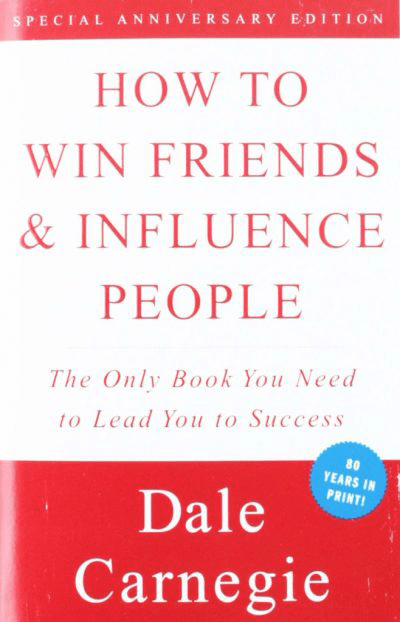How do you win friends and influence people? Carnegie’s lessons are as bold and plain as tablets of stone
How should we act with friends?
You need to: act friendly, avoid apportioning blame, appreciate good work, instil desire, issue challenges, express yourself dramatically, listen carefully, admit you are wrong, show interest in the other person and make them feel important.
Thinking of Vernacular prose & Dale Carnegie
I won’t waste your time with a rundown of what “How to Win Friends and Influence People” is about. With over 15 million copies sold and a very self-explanatory title, I think you all get it. For the rare person who may not know what this book is about, here is a succinct description: in 1930s vernacular prose, Dale Carnegie explains that by appealing to the other person’s highest ideals, remembering the other person’s name, letting the other person do most of the talking, speaking in terms of the other person’s interests, allowing the other to save face, by “launching down a challenge,” etc. you can make a friend out of just about anyone. The advice is mainly sound, but I think the reader should keep in mind the context within which this book was written.
Techniques
“How to Win Friends and Influence People” was written in the 1930s and intended primarily as a companion book to Dale Carnegie’s classes on being a good salesman. In other words, these techniques work very well in the context of sales and public relations, i.e., in relationships that are not expected to be deep and long-lasting.
I would not recommend using these techniques on close personal friends. Doing so may make a person come across as a bit “plastic.” Also, there is one central point that I think needs to be remembered, but unfortunately, is nowhere to be found in
Biography of Dale Carnegie
“How to Win Friends and Influence People.” During my research of Dale Carnegie’s techniques, I came across what I believe may be the only biography available about him. Dale Carnegie: The Man Who Influenced Millions by Giles Kemp and Edward Claflin.
This book reveals many interesting things, such as the fact that Dale Carnegie grew up poor; he lost part of his left index finger when he was a child; he broke many of the tenets outlined in this book, often forgetting others’ names, often arguing with others, etc.
Tip to Europe and the missing chapter
What I found most interesting was that the last chapter of “How to Win Friends” was to describe those individuals with whom none of Dale Carnegie’s techniques works.
In this unpublished chapter, Carnegie wrote that some people with whom it was impossible to get along. You either needed to divorce such people, “knock them down,” or sue them in court.
Why is that chapter absent from this book, you ask? Dale Carnegie was in the middle of writing this chapter when he was offered a trip to Europe. Rather than complete this last chapter, he decided to take the trip. The uncomplete book was sent off to publishers, and Carnegie shipped off to Europe.
Giles Kemp and Edward Claflin say that given the optimistic tone of the rest of “How to Win Friends,” the European trip was perhaps the better choice. I had to learn the hard way that the unpublished chapter is very accurate. There are some people with whom it is impossible to get along.
When you meet up with such people, and believe me, you will not think that you have failed the Carnegie techniques. Instead, remind yourself that you are experiencing exactly what Carnegie describes in that pragmatic, unpublished chapter. And then quickly move on to the more excellent people!


One thought on “How do you win friends and influence people…Reviews”